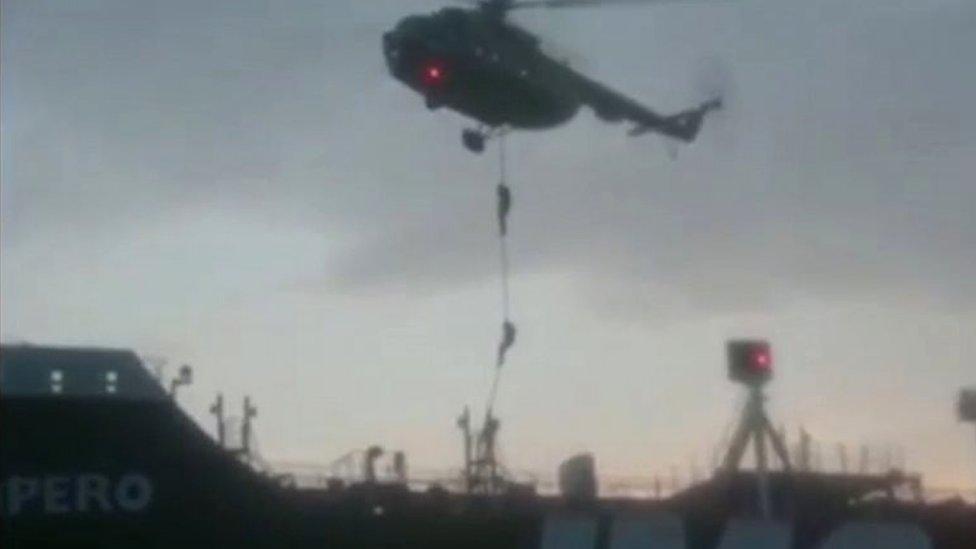Gulf crisis uniquely difficult strategic moment for UK
- Published
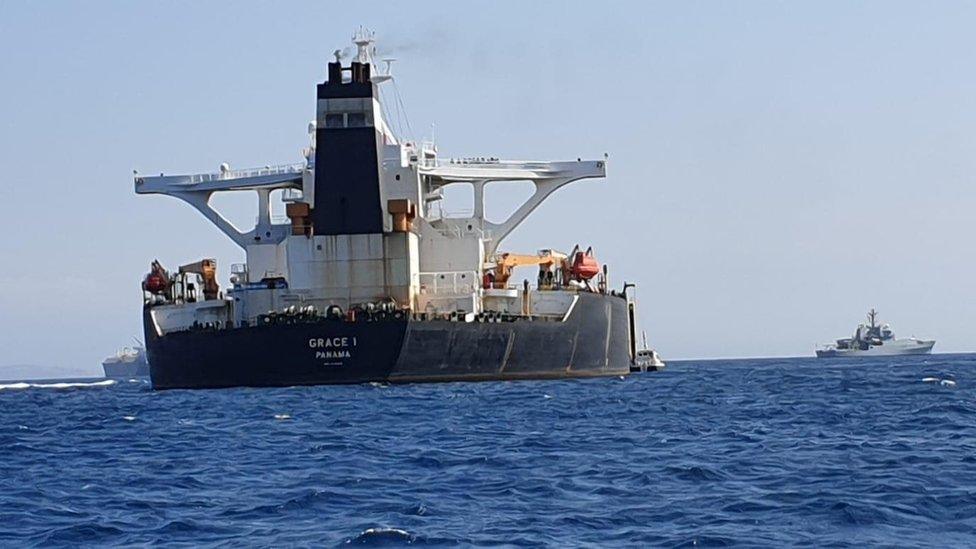
Could the release of the tanker Grace I from custody in Gibraltar change the current dynamic?
The Gulf crisis catches the UK at a uniquely difficult strategic moment.
Its military means are quite limited, Iran's are greater than many might think, and the option of defaulting into its usual partnership with the US is not straightforward because of disagreements over the wisdom of breaching the nuclear deal.
For this reason, on Monday, UK Foreign Secretary Jeremy Hunt suggested that the response to the crisis should include a "European-led maritime protection mission", complementary but separate to the US effort.
The issue, he insisted, was one of freedom of navigation in the Straits of Hormuz rather than increasing pressure on Iran.
The UK's options for protecting its merchant shipping in the busy Gulf sea lanes are distinctly limited.
The US has suggested opting into a joint system for convoying ships past the Iranian littoral, but British decision makers are reluctant to do so - because they disagree with President Trump's decision to exit the Iran nuclear deal in May 2018 and believe this step prompted the current tensions.
The other option for a rapid change to the dynamic would be releasing the tanker Grace I from custody in Gibraltar, where it was detained on suspicion of carrying Iranian oil to Syria.
Last week British officials had been upbeat that a solution to that situation could be negotiated, and then the UK-flagged ship Stena Impero was seized by Iran in Omani waters.
Why does the Strait of Hormuz matter?
It may well be that the release of both vessels provides de-escalation. But the longer term questions about UK-US disagreement on Iran policy, and inability to protect shipping, will remain.
One thing is clear: the Royal Navy would be hard pressed to recreate its solution from the Gulf tanker war of 1986-1988, called the Armilla Patrol.
When I visited Armilla early in 1987 it customarily had between two and four frigates or destroyers, a couple of auxiliaries and a mine counter measures squadron
The mine-hunting vessels are still there, but these days a single frigate or destroyer has to cover the Gulf station.
At the time of my 1987 trip the Royal Navy had 47 destroyers and frigates. Now it has 19.

While it could certainly surge another one or two of these ships into the region, it would be hard to sustain.
And the stresses of crewing the new aircraft carrier, Queen Elizabeth, have compounded this situation because they've led to two escort ships being taken out of service.
Looking at the way the strategic balance has changed since the 1980s it's possible to argue also that these large, expensive vessels, a Type 45 destroyer is a £1bn platform, are no longer appropriate in any case.
Among the responses put in place by the Americans after the 1980s tanker war was a small fleet of fast patrol boats, backed up by helicopters, surveillance drones and other aircraft.
These measures are designed to in part to keep larger American ships out of harm's way, since Iranian forces have been considerably modernised since the eighties.
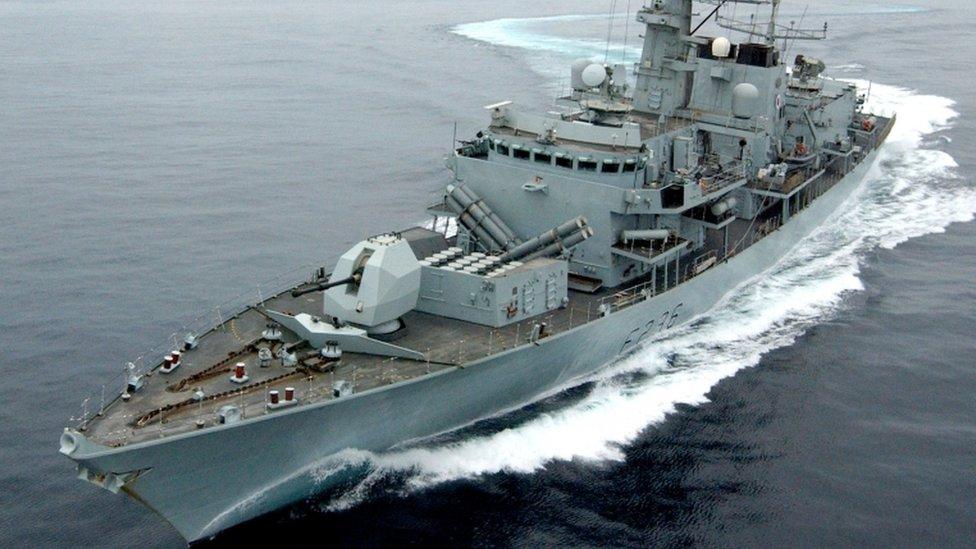
HMS Montrose has been shadowing British tankers moving through the Strait of Hormuz
Iran has created a submarine fleet that includes 17 very small vessels ideal for mine laying or hit-and-run torpedo strikes. It has also made strides in drone warfare, anti-air and anti-shipping missiles.
Add to Iran's growing military capability its ability to "asymmetric warfare" options from cyber or information operations to the use proxies. In 2015, for example, MI5 uncovered a plot to stockpile homemade explosives in London.
UK police held a suspect believed to be a member of Hezbollah, the Lebanese movement tied closely to Iran, before releasing him without charge.
Nobody thinks Iran is about to use such "sleepers" in a minor skirmish over oil tankers, but in a general conflagration with the Americans, such cells could provide the Iranian Revolutionary Guard with options.
'No rapid fix'
How then does the UK respond in the short term to the challenge of improving the security of its shipping? Diplomatically, the answer appears to be by keeping its distance from the Americans while trying to solve the issue of the two detained tankers.
In military terms there is no rapid fix. Even if the present crisis caused the government to open its cheque book, swelling the destroyer and frigate force back up, even say to 30, could be a decade's work, not least because of the need to train up thousands of additional sailors.


So the quick option, and arguably the smarter one too given the evolution of Iranian forces, would be to bolster light rapid reaction forces in the Gulf.
The UK military could already provide a detachment of gunship helicopters, surveillance drones, commandos, and a large amphibious or auxiliary platform to act as a mother ship. A force of small, fast attack craft would need to be borrowed as a stop gap, while suitable vessels were acquired.
These are the sorts of options being considered by the British military at the moment. But of course they are about risk management and deterrence.
Underlying Gulf instability are the forces thrown up by the US abandonment of the nuclear deal as well as the violent rivalries between Iran and key Gulf Arab states.
You can watch Newsnight on BBC Two weekdays at 22:30 or on iPlayer, subscribe to the programme on YouTube, external and follow it on Twitter, external
- Published22 July 2019
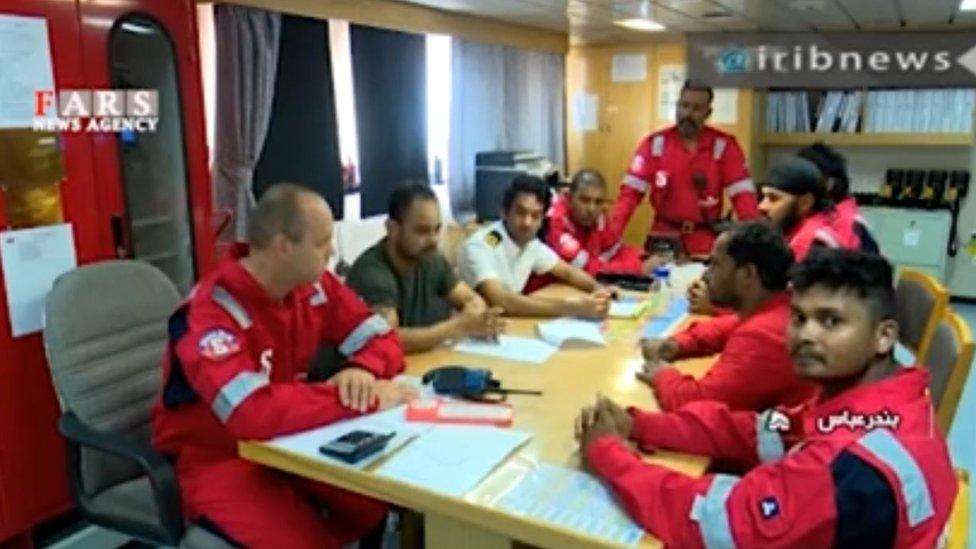
- Published21 July 2019
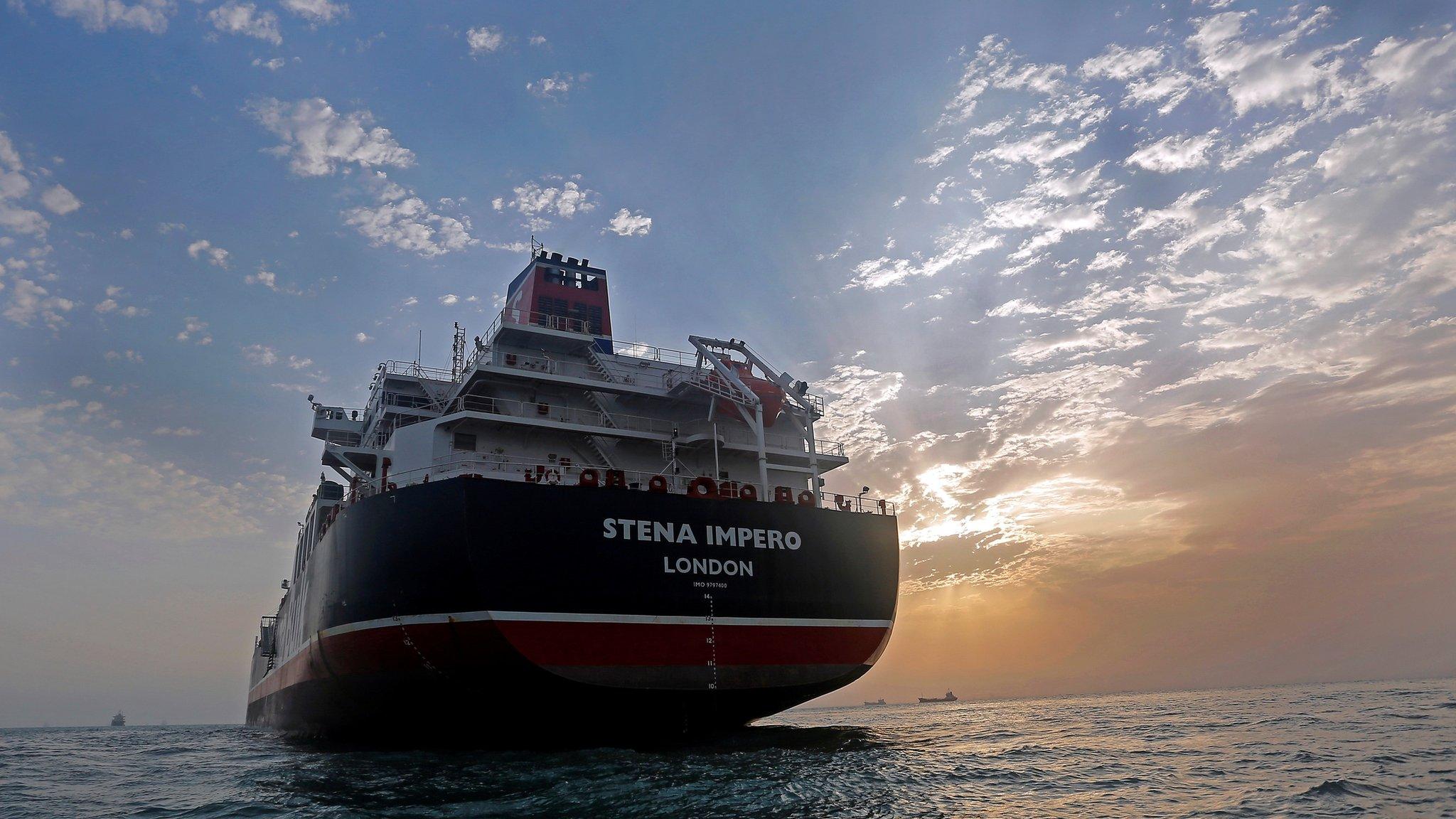
- Published19 August 2019
